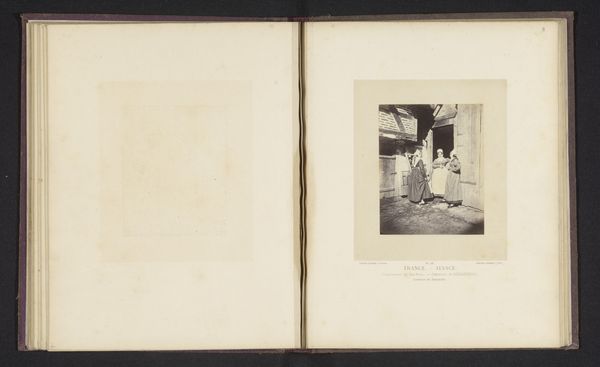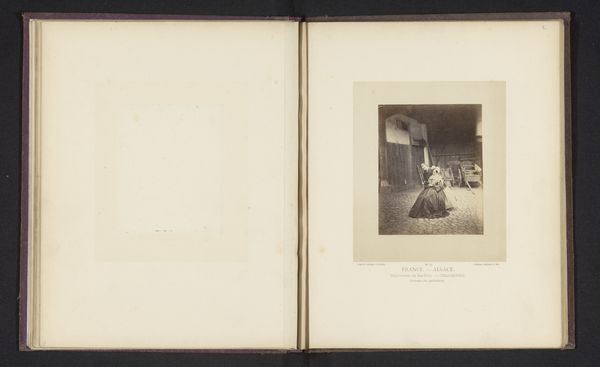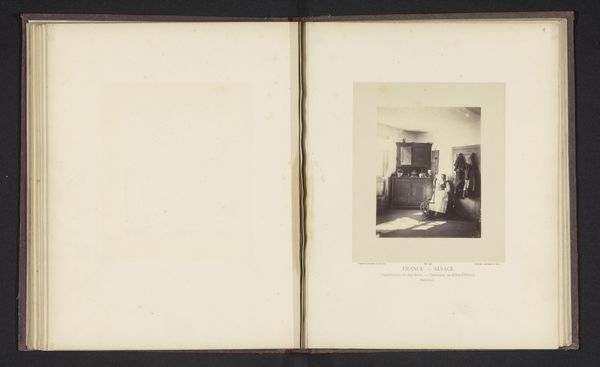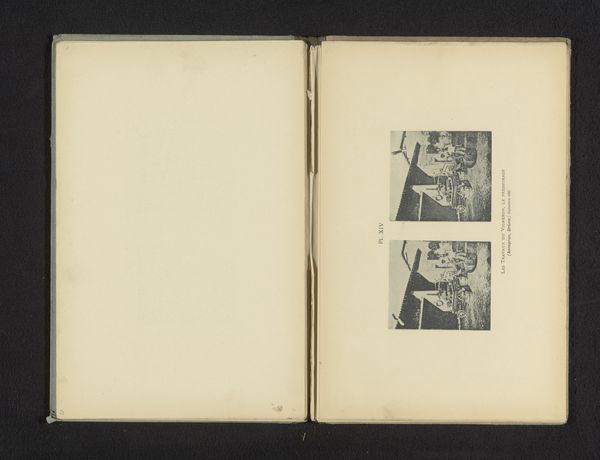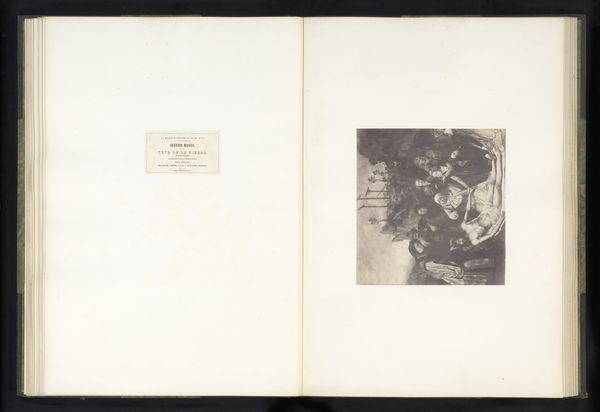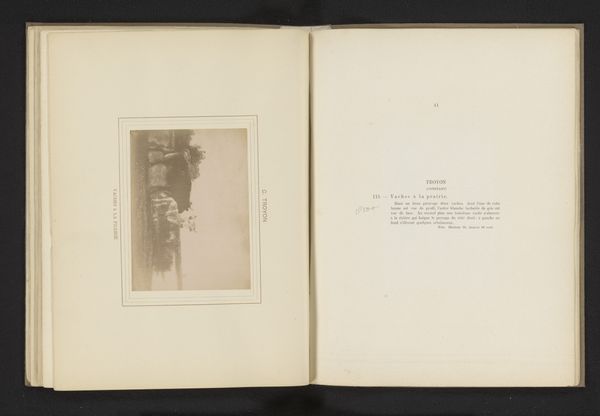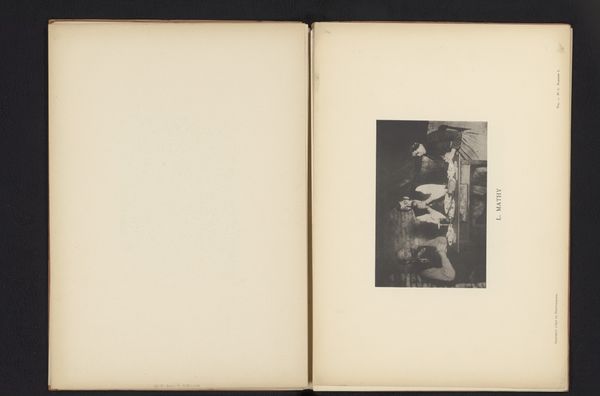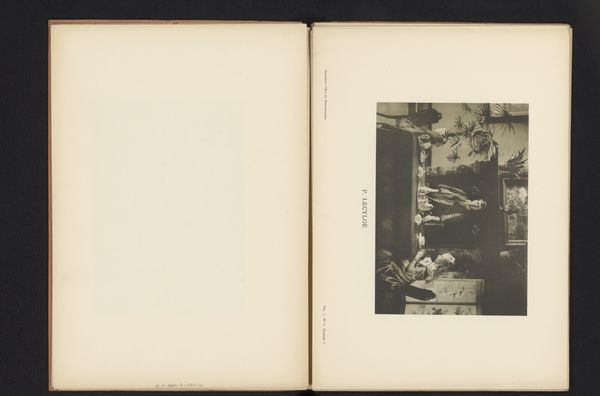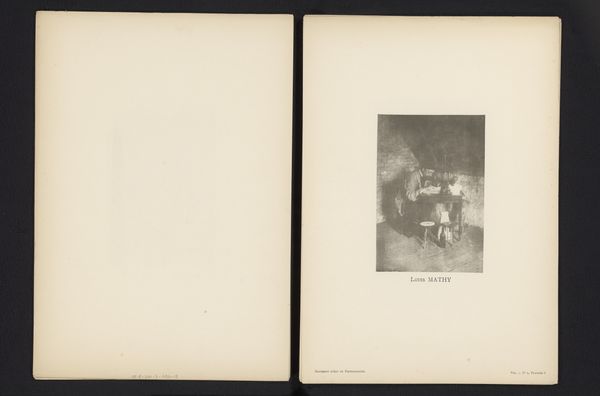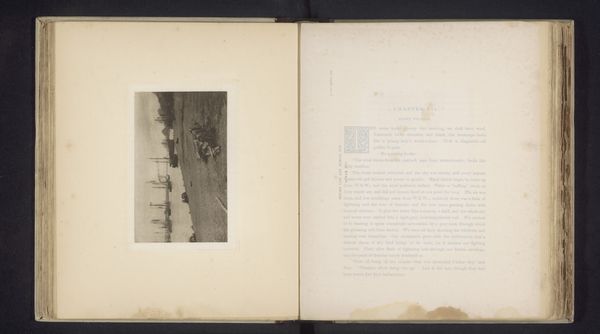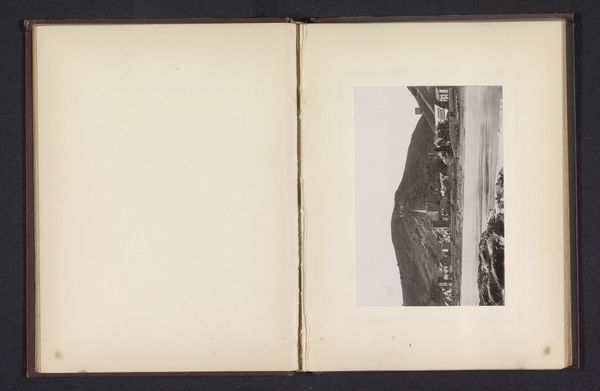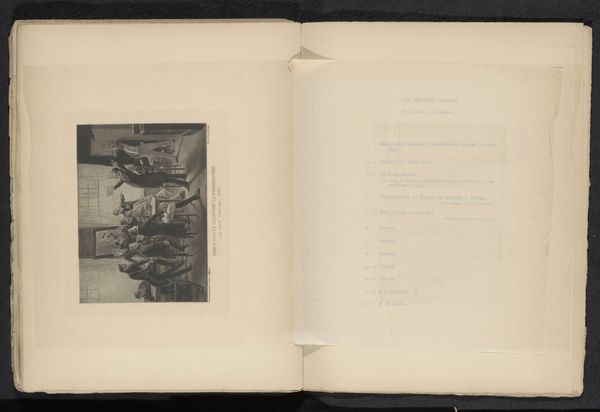
photography, albumen-print
#
aged paper
#
homemade paper
#
script typography
#
hand drawn type
#
landscape
#
photography
#
personal sketchbook
#
hand-drawn typeface
#
fading type
#
thick font
#
genre-painting
#
handwritten font
#
albumen-print
#
realism
#
historical font
Dimensions: height 106 mm, width 86 mm
Copyright: Rijks Museum: Open Domain
Editor: So, this albumen print, “Meisjes in klederdracht te Hundsbach,” was made by Lalleman & Hart sometime before 1865. The light is beautiful but the overall tone is kind of somber. It makes me wonder about their lives... What do you see in this piece? Curator: The very act of photographing these girls freezes them in a particular moment in time, but also attempts to solidify a cultural identity. Note the carefully arranged composition, almost like a tableau. What do their traditional costumes communicate to you, do you think? Editor: They signal a specific place and heritage, something timeless, almost… are they consciously aware of their own image? Curator: Precisely. Photography in this period served, in part, to document and, arguably, preserve cultures perceived as disappearing or being threatened by modernity. Their clothing and grouping evoke community, the passing down of tradition. Notice how their expressions are rather unsmiling, direct. Does that tell you anything? Editor: Maybe that image-making was still a solemn event…a means to establish a record? Something weighty? Curator: Exactly! Early photography had a different gravity. Think about how portraits, especially, acted as a kind of memorial. It suggests an attempt to preserve memory but for whom, and for what reason? Do you see the shadows and textures that evoke the past? Editor: I hadn’t thought about that—photography performing the task of cultural preservation. It adds another layer of complexity to this image. Thanks for that insight! Curator: My pleasure. The weight of history, you see, is woven into even the seemingly simplest images.
Comments
No comments
Be the first to comment and join the conversation on the ultimate creative platform.
